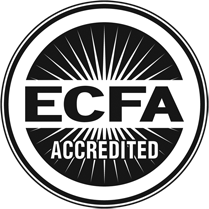How We Got Started: Central African Republic
The Birth of a Movement in CAR
After a dramatic conversion experience in Philadelphia, James Gribble felt a profound calling to dedicate his life to missionary work. This calling led him to Africa in 1908. During a severe illness in 1910, Gribble received a vision that would shape the next decade of his life. He saw the unreached tribes of Oubangui-Chari (present-day Central African Republic and beyond) and heard the unmistakable call to carry the gospel to these people.
The Foreign Missionary Society of the Brethren Church—which would later become Encompass World Partners—officially approved the Oubangui-Chari region as a mission field in 1917. We entered the region in 1918 amid the turmoil of World War I. This marked the beginning of the Charis Fellowship’s missions legacy in Africa.
They established their first mission station at Bassai Hill in 1921, and the first locals were baptized the following year. Gribble’s health deteriorated under the harsh conditions, and he passed away in 1923 (just two years after establishing the mission station). Yet his vision lived on.
The Growth of the Movement in CAR
The foundation that God laid through Gribble’s sacrifice paved the way for subsequent waves of missionaries, and the gospel took root among the people of Central Africa. Charis churches were firmly established by 1960, which was the same year that the CAR gained independence from France.
When James Gribble first entered central Africa as a pioneer missionary, there were no Christians in the area. He described it as going to “the darkest and most densely populated region.” He said it was “a place where not only has the Gospel never been preached, but where no one else plans to preach it.” The movement that started with James Gribble in the CAR has thrived and spread to surrounding countries. In recent years, Central Africa has been recognized as one of the most evangelized regions of the world. The CAR now has 3,875 Charis Alliance churches and 349 church plants. In addition, Africa is now the continent with by far the largest Charis Alliance presence.
A Call to Prayer and Support
- The CAR faces a lot of poverty and social unrest from ongoing armed conflicts as a result of the civil war that has been affecting the nation since 2012.
- Our Charis Alliance partners in the CAR are working hard to share the gospel with people in refugee camps and to plant new churches. The far north and east of the country, culturally Muslim, have become increasingly open to the gospel.
- The Central African Republic is seeing a growing influence of cults and sects. Foreign aid workers from the United Nations often refuse to hire unless employees convert and accept their cult’s practices.
- Give here to help provide practical assistance to our ongoing ministries in Central Africa.




